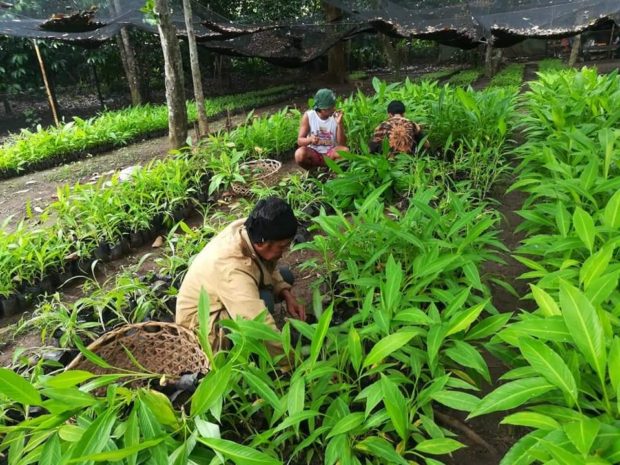Typhoons, ‘deadly’ practices of traders stunt growth of abaca industry

Photo from Philippine Fiber Industry Development Authority’s Facebook page
A slew of typhoons coupled with the prevalence of crop diseases and poor farming practices stymied domestic abaca production last year, according to the Fiber Industry Development Authority (PhilFida).
Data provided by PhilFida showed abaca output reached just 63,640.61 metric tons (MT) in 2022, a decrease of 5.7 percent from 67,488.11 MT recorded in 2021.
“This is due to the usual and perennial culprit that visits the Philippine Area of Responsibility at an average of 15 tropical typhoons per year, five of which made landfall in 2022,” it said.
Apart from the occasional typhoons and diseases affecting produce, PhilFida highlighted “the deadly ill harvesting and trading practices of the farmers, traders and the furniture makers.”
Apart from making furniture, abaca is also used for tea bags, meat sausage casing, surgical masks and cigarette paper. The Bangko Sentral ng Pilipinas also uses abaca to make paper bills.
Failed to catch up
Six regions have expanded their production, yet the output of six other regions pulled down the overall volume of abaca harvested in the past year.
Bicol remains the country’s leading abaca producer, accounting for 29.9 percent of the total in 2022. Its production, however, dropped by 4 percent to 19,040.70 MT.
Southern Tagalog posted the largest increment at 35.8 percent while Northern Mindanao incurred the biggest decline at 21.4 percent. Both yielded 88.25 MT and 6,482.50 MT, respectively.
Caraga came next after Southern Tagalog with 11,193.43 MT, up by 15.9 percent while Central Luzon saw its harvest rise by 7 percent to 42.39 MT.
Other regions also registered an increase, namely Bangsamoro Autonomous Region in Muslim Mindanao (2 percent), Central Visayas (1.3 percent) and Western Visayas (0.599 percent).
The second largest decrease was reported in Eastern Visayas at 3,819.36 MT, down by 19.9 percent. Soccsksargen’s volume, on the other hand, dwindled by 19.7 percent to 1,586.11 MT.
Outputs of Zamboanga Peninsula and Davao went down by 15.6 percent and 10.3 percent, respectively.
Still, PhilFida said the year 2022 was “not bad” for the industry amid the presence of weather disturbances and shear line winds which led to “unprecedented floodings and landslides in the provinces.”
“In other words, the country is experiencing the La Ñiña phenomenon and will continue to persist until February 2023, according to the [Philippine Atmospheric, Geophysical and Astronomical Services Administration],” it added. INQ
